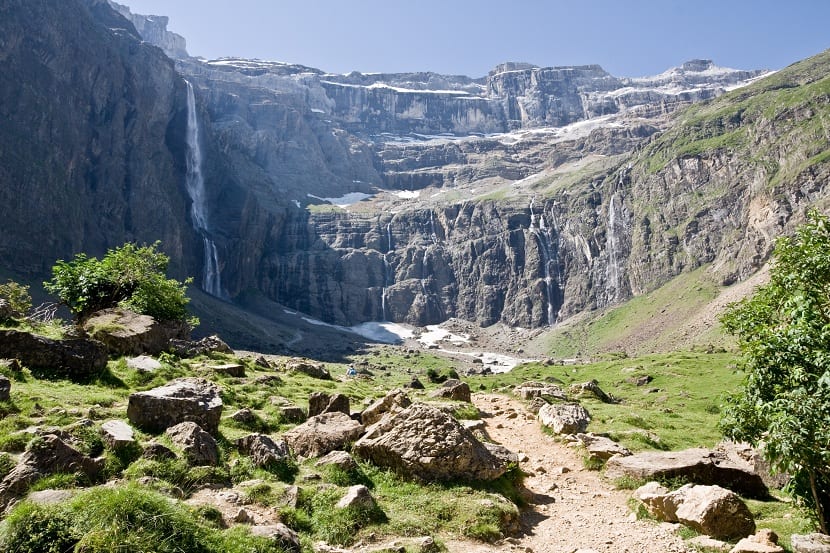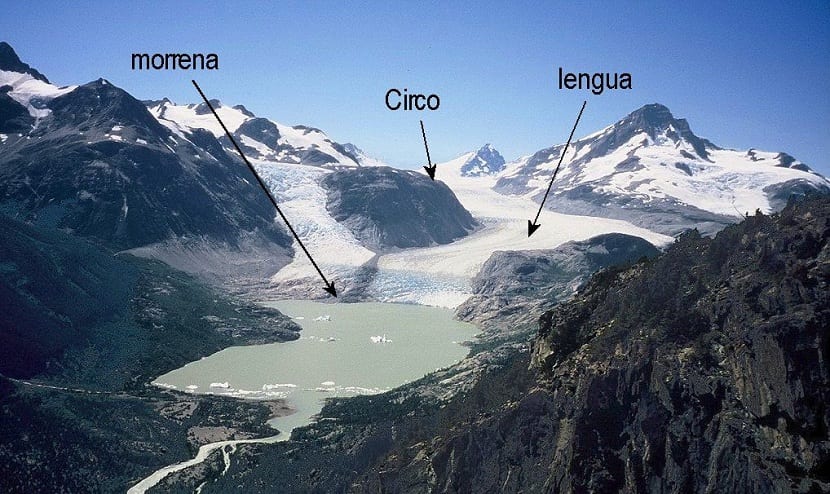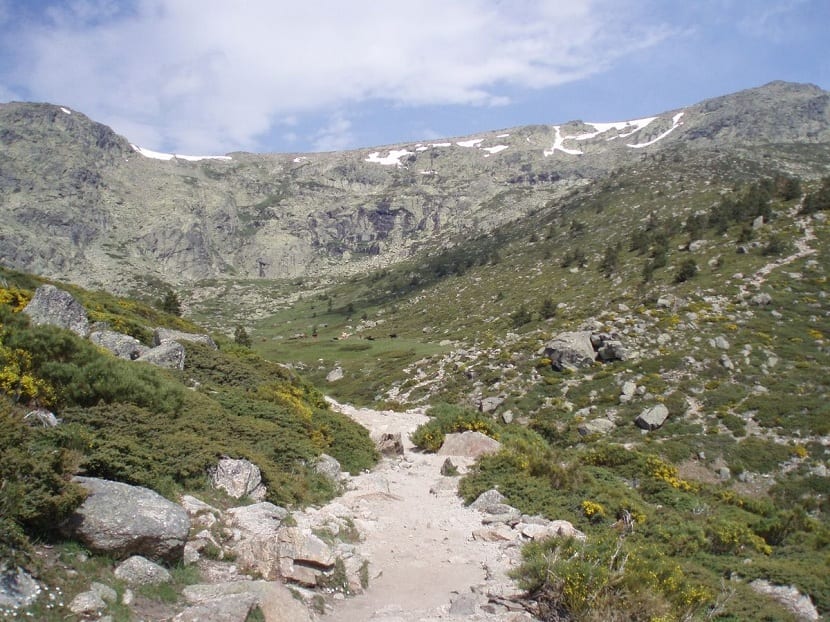
As we know, glaciers They are large, thick and solid masses of ice that form along the earth's surface as a result of the accumulation, compaction and crystallization of snow after years of having precipitated. Today we are going to talk about an interesting part of the glaciers. Its about glacier circus. The importance of glaciers is becoming more and more relevant in the context of climate change in which we find ourselves.
In this article we are going to explain what a glacial circus is and how important it is.
Dynamics of a glacier

To understand what a glacial cirque is, we must first know how the glacier is formed. When the amount of water that evaporates in summer is exceeded by the annual snowfall the action begins to melt. For a glacier to form there has to be a positive balance of the amount of snow that is deposited on the earth's surface as opposed to the amount of snow that melts or evaporates.
There are a great variety of glaciers throughout the world. Different shapes can be differentiated between each type of glacier. For example, There are glaciers with valley shapes, niche, ice fields, etc. The climatic conditions that we find are also determining factors when it comes to seeing the shape of a glacier. These conditions can be tropical, temperate, or polar. Thermal conditions influence the amount of snow that accumulates or melts. Depending on the average temperatures that we find in a glacial area, we may have more snow accumulation and greater compaction than if the temperatures fluctuate more.
Today, 10% of the surface of our planet is covered by glaciers. In ancient geological ages it was covered by 30%. It can be said that it is the geographical feature that accumulates the greatest amount of fresh water in the world. Hence the danger of its imminent performance or, therefore, the rise in sea level.
84% of all the total glacier area is in Antarctica, while the rest is divided into Greenland and other icy areas of the planet.
What is a glacial circus

Now that we have remembered how the dynamics of a glacier work, we can fully enter the glacial cirque. A glacial circus a circus glacier is a kind of rocky basin with a semicircular shape It is caused by the constant sliding or rubbing or ice with pact or in its accumulation or feeding zone. The accumulating zone of a glacier is the part where the amount of snow that is deposited is much greater than that which melts. On the other hand, we have the abrasion zone where the melting rate is higher than the accumulation rate.
The glacial cirque is usually in the shape of an amphitheater or chair with more pronounced sides or with vertical ridges that surround it. The glacial cirque usually has two parts that can be easily distinguished. We have the part that is divided by a crack called a rimaya that is transverse or horizontal: here we find the lower part, which is where more snow and ice accumulates. The upper part, on the other hand, has much larger slopes and the ice is much more compressed due to a lower temperature.
We can also find an ablation zone in a glacial cirque. This area is the one where the process of melting, processing and detachment of the ice masses occurs when entering the sea.
Characteristics of the glacier cirque

Although there is a great variety of glacial cirques, all of them are characterized by having some morphological features that allow us to distinguish those of the reception basins of the mountain streams. Among the main characteristics we have its upper walls. They are located above the bergschrund of the old glacier. These walls were not limited or destroyed by the abrasion of the glacier. Its slopes are very steep and its surface is irregular due to the fall of the ice blocks that are going to adhere to the rock.
On the other hand, we have the bottom of the glacial cirque. It has a much lower slope than the walls have. We can find in this background various muddy rocks that have been eroded by the dynamics of the sky. Sometimes, we can also find moraine cords that are parallel in the direction of the slope. The bottom of the circus can be basin-shaped or horizontal. Further, Depending on their shape, they can have one or more glacial lagoons.
In circuses that are shaped like amphitheater, the cross section has a U-shaped section. Below the lower edge of the circus we can see how the slope is accentuated marking the beginning of the glacial valley.
Athough it does not seems, the berry is of great importance in the glacial cirque. It is a horizontal crack that forms in the ice on the flanks of the glacial cirque. This crack is responsible for separating the fixed ice that is attached to the rocks of the mountain from the moving ice of the glacier itself.
The berry is opening and exposing the rock that is at its height in early summer. This is due to the high temperatures and the beginning of the melting of the ice. The rock is exposed to daytime and nighttime changes in temperature. These repeated cycles of freezing and thawing, under the action of frost, cause the rock to gradually disintegrate and cause the upper rocks to fall. This is how the rocks take irregular and almost vertical cut-out shapes.
These freeze-thaw cycles are being disrupted by climate change. The melt portion is increasing much more than the amount of precipitation in the form of snow that can accumulate informing the glacier.
I hope that with this information you can learn more about the glacial circus.